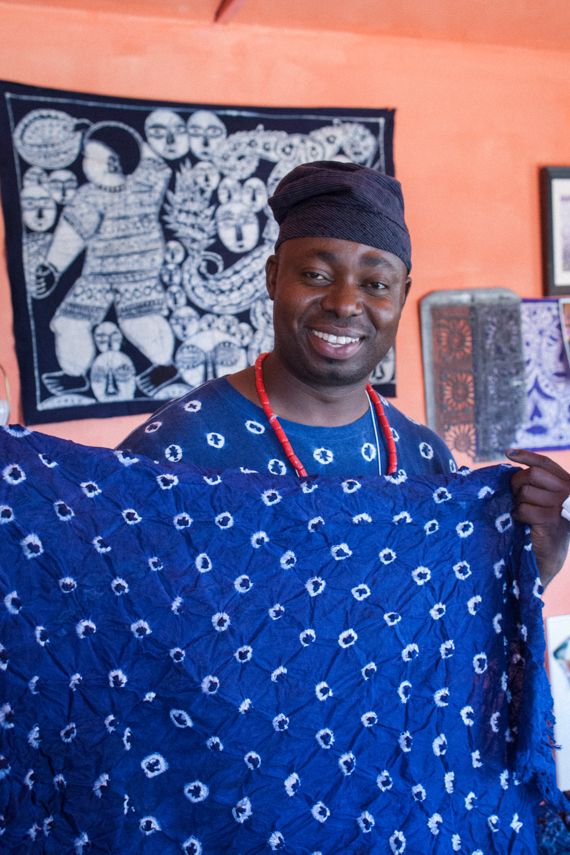g
gamcha

gamcha (India)
An everyday, multipurpose checked cotton cloth measuring ~89 × 180 cm (35 × 70 in.). Gamcha, locally translated as sweat towel, is used by Indian men as a towel, scarf, head dress, or draped over the shoulder. Traditional handwoven gamcha are readily available in khadi shops. Our all-cotton gamcha are a mix of off-the-shelf and custom designed cloths. So common are gamcha on Indian streets, for Christina they have come to represent the everyday man of India. See also lunghi
gasalionirekeadeyemo

Gasali Onireke Adeyemo (Nigeria/USA)
Artist and teacher of Yoruban indigo dyeing, adire, embroidery, quilting, and appliqué. Gasali was born in a village in Offatedo, Nigeria, then immigrated to Santa Fe, New Mexico, where he currently resides. Warm and instantly likable, Gasali is eager to share his knowledge of indigo (elu), which grows wild in Nigeria. For over 2,000 years, elu has been used in Africa as a dye, a medicine, and a way to ward off sickness. According to Gasali, in Yoruba “the color blue is love.” Since 2010, we have been collaborating with Gasali on unique interpretations of Yoruban designs, each pattern conveying symbolic meaning. Using tools fashioned from scavenged sticks, feathers, and scrap metal, he paints aesthetic markings on fabric with homemade cassava resist paste. His work is very labor intensive and done entirely by hand. See also indigo
guasqueríaacuña

Guasquería Acuña (Uruguay)
Specialist in the old Uruguayan art of guasquería, the making of horse gear from cowhide. José Andrés Acuña is one of Uruguay’s best known and last remaining master guasqueros, having learned the trade from his grandfather in Tacuarembó. Rawhide is prepared and processed from start to finish: he removes fat, meat, and hair from fresh animal hide; dries the hide under the sun; cuts the leather into strips; and braids the strips into rawhide belts and other cattle ranch gear. The process is entirely free of chemicals. We started carrying José Andrés’ gaucho belts in 2016.